Best Eurorack filters: 8 filters you should have in your rack
There are many reasons for choosing a filter; price, sound, creaminess, but why not start your search with what we think are the best filter modules for cutting tones and slicing frequencies in your Eurorack.
For those who are about to filter
Despite our aspirations of creative sound sculpting and tone crafting a lot of the time we drop back to fingering that filter cutoff as our main form of expression. It’s the one action guaranteed to make an impression and it’s such a goddam pleasing manoeuvre. It’s in every bassline, every sweep, every pad and every lead line. It brings things in, takes them out, fades and bubbles, sings and growls. If nothing else I got into Eurorack to play with filters.
But which filter? There are so many doing a very similar thing that does it really make a difference? I think so yes. I’ve been as surprised as anyone at how different filters can be and how they lend themselves to different tones and different situations. So here’s my collection of the filters that have impressed me either through personal use, demonstration or legacy. You may have different ideas and please lend us your picks in the comments below but I hope these will give you a decent recommendation for your next filter.
System80 Jove
This filter rescued me from modular disappointment and uncertainty and is everything a filter should be. When I built my first row of Eurorack I went for an Erica Synths Polivoks filter thinking it was really cool and grungy without really knowing anything about it – and it was cool and grungy but it didn’t sound like I thought filters should sound like from my experience with synthesizers. I was then at a local synth-meet with my little row of Eurorack and I sat next to guy with a Jupiter 8 and the filter on that thing blew me away – that’s exactly what I thought filters should sound like. I got home and immediately sought out a Roland style Eurorack filter and fell upon the recently released Jove filter from System80. Sometime later, and I’ve learned a few things since then, it is still hands-down the most satisfying filter in my rack.
The Jove is based upon the Roland Jupiter-6 filter with a 24dB low pass, a bandpass and high pass mode. There’s also a 12dB 2-pole mode that approximates the filter from the Jupiter-8. It sounds as creamy and lush as either of those synthesizers. Route something through it and it immediately grabs the sort of filtering sound that you completely expect it to. It’s bang on the money every time. You have CV control over the cutoff and resonance and once you pump that resonance up a bit it really sings. It’s immensely musical you can play with its self-oscillations and enjoy the wetness of the sound. It even has a second input with attenuator.
The front panel looks fantastic the build quality is top-notch and it does everything you expect it to. You should buy this filter.
More information – System80 website
Erica Synths Fusion VCF3
I’ve learned to love my Erica Synths Polivoks but for the pinnacle in deeply black filters the Fusion VCF3 is thunderingly good and surprisingly sweet. Its the latest vacuum tube-based filter for their Fusion range of premium modules. It glows at you invitingly, it’s extravagantly wide and those bakelite knobs are so good to play with. But in this version the tubes are not part of the audio signal chain they are combined with vactrols as the control system for the filter. It brings an organic feel to the cutoff, a smoothness that perhaps unexpected from the masters of black modules. And as you push the resonance it starts to purr and produce soft tones that both surprise and delight. It has such sweetness.
It also has super powers. It has a 3-channel mixer that can completely bypass the filter if you wish. It has 1-3 multi which seems like an odd feature but one which makes more sense in the Fusion II system but is also useful in any case. But most interestingly of all it has a built-in CV recorder. Holding a button and twisting the Record CV knob lets you record those movements as a looping envelope or LFO. You can apply it directly to the cutoff or take it out to modulate something else. It lets you add a quick performance to the cutoff that carries on while you go off and fiddle with something else. Superb.
More information – Erica Synths website.
Instruo tràigh
Instruo brings a unique sense of style and quality to their modules. Tràigh is a simple and elegant filter based upon the classic transistor ladder low pass filter of East coast synthesis. There are a lot of filters based on this design but Instruo’s implementation is beautiful and relatively inexpensive. It’s perhaps a little too generous in proportions but that also gives you room to play with feeling cramped or hampered – the space around the cutoff knob is fabulous.
Tràigh has 3 inputs with illuminated slider based mixing controls and an overall output with a similarly lit level slider. You have both a coarse and a fine cutoff control which gives it the feel of an oscillator and it inhabits that vibe as you push the resonance and make use of the 1V/Oct input to play with those tones. It’s so soft and so musical that it sings effortlessly under your control. You then have a separate FM input for more modulation. The output is so warm and cozy it’s like throwing a comfort blanket over your sound.
More information – Instruo website.
Doepfer A-124 VCF5 Wasp Filter
The best filters don’t have to be flashy and expensive. Doepfer makes some of the best clones of classic filters around and for ridiculously reasonable prices. The A-124 VCF5 Wasp Filter emulates what they call the “strange” filter circuit of the EDP Wasp synthesizer built in the UK in the late 1970s. The peculiar design that uses digital inverters as op-amps leads to all sorts of distortion, fizz and grittiness that defines the sound of the Wasp.
The Wasp Filter has a bandpass output and then a combined High/Low/Notch filter that responds differently depending on the mix knob and moves smoothly between the possibilities.
Where other filters are sweet and musical this is all about tearing sound apart and building character. It’s small, neat, obvious and the sort of filter no system should be without.
More information – Doepfer website.
Joranalogue Filter 8
The Filter 8 is a seriously designed filter which packs in a massive amount of tone crafting and shaping possibilities. The OTA-style dual input 4-pole lowpass filter is only the beginning with 4 separate outputs each with its own character. There are a further 4 outputs created by “pole mixing”: 1-pole highpass, a special band boost and notch response, phase shifter and 4-pole bandpass. All of the outputs benefit from the resonance feedback circuit which ensures no drop in signal and then pushes the filter into a self-oscillating monster.
Once oscillating Joranalogue transforms it into a low distortion VCO with tracking over 5 octaves. The 8 filter outputs become phase offset sine wave outputs separated by 45 degrees. At low frequencies it can become a slew modifier or 8-phase LFO.
It has exponential and linear FM for modulation or interesting tones and the output can be frozen by gate or button. Lastly there’s a Ping input for twanging the filter to generate percussive tones just under self-oscillation.
This is the sort of filter that’s playing in a different field of expression. Sure it can do the whole cutoff sweep thing but it harbours a huge range of tonal possibilities that you won’t find on anything else.
More information – Joranalogue website.
Intellijel Polaris
If you want a multimode filter that’s going to do the job right without too much fuss and yet has enough character to cut through the fog of beeps and bubbles then the Polaris could be for you. It has a surprising amount of versatility without over complicating things.
Keeping it simple you have your three Lowpass, Highpass and Bandpass outputs, cutoff and resonance and off you go. It has a great buttery texture to it that’s just going to make you happy and a specially designed resonance compensation circuit to stop the drop. But there’s also a “Multi” output and that, with a little bit of modal wizardry can offer up to 27 different filter possibilities. It blends mode and mixes pole and even comes up with 4 types of phaser output.
It has 2 FM inputs for modulation but the icing on the cake is the overdrive and distortion circuits that let you dial in a deliciously aggressive sound.
Polaris is a really capable filter that focusing on what’s important and delivers a huge amount of versatility.
More information – Intellijel website.
Mutable Instrument Ripples
Classic, liquid, analogue and fat-sounding is generally how people describe Ripples. It’s not looking to be flash or complex but rather offers and elegant 4 or 2-pole low, high and bandpass filter. Mutable Instruments has taken care of the resonance signal drop with a compensation circuit that brings some character similar to that of those classic Japanese analogue synthesizers. This is definitely all about the cream.
The self-oscillation brings a clean sine wave with voltage tracking CV control turning it into a pretty decent VCO. There are 2 inputs, one with a drive control and also an inbuilt VCA and 2 inputs making it perfect for a compact system as a little subtractive voice.
Ripples is neat, beautiful and unconcerned with complexity.
More information – Mutable Instruments website.
Make Noise QPAS
QPAS doesn’t really call itself a filter. Instead it’s some kind of Quad Core Stereo Analog something with multi-peak resonance. What it probably is is a stereo filter and one that was slightly ahead of the sudden appearance of many more stereo filters in the Eurorack scene.
Inside QPAS are 4 identical state variable filter cores designed to be used in a stereo configuration with multiple resonant peaks. The 4 cores are the only way to achieve the sort of stereo animation that Make Noise were after. The “Radiate” left and right parameters control the imaging by offsetting the left and right from the centre cutoff frequency and moving the peaks away from each other or back together. The resonance affects all 4 cores but can create some wild effects as the cores can be modulated independently.
Make Noise modules are never the easiest to explain and in fact they intentionally build mystery into them to encourage blind patching and experimentation. You have some unlabelled inputs for you to explore and along with the regular high, low and bandpass outputs there’s a mixed output and a “Smile Pass”.
QPAS makes for a fascinating adventure into stereo filtering and exploratory tonal crafting and will keep you fiddling for hours.
More information – Make Noise website.
All the Filters
There are plenty more filters and a vast around of options but these are the ones that I keep coming back to either in use or in fascination. Do these resonate with you (see what I did there?) or do you have some further suggestions? Let us know in comments.
Affiliate Links
This post contains affiliate links and/or widgets. When you buy a product via our affiliate partner, we receive a small commission that helps support what we do. Don’t worry, you pay the same price. Thanks for your support!
9 responses to “Best Eurorack filters: 8 filters you should have in your rack”
 4,8 / 5,0 |
4,8 / 5,0 | 





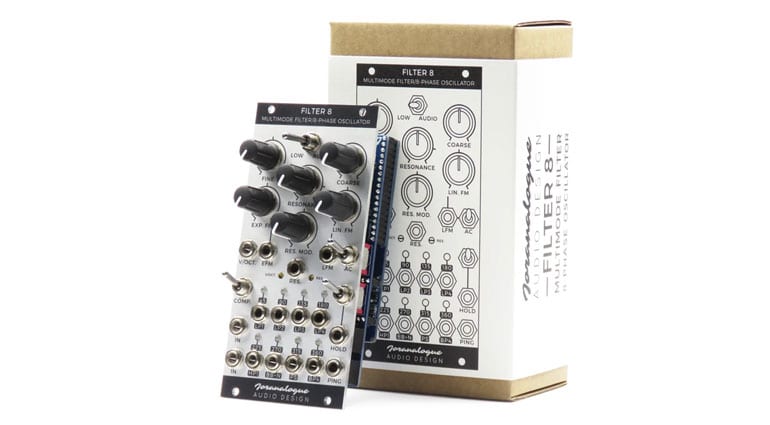
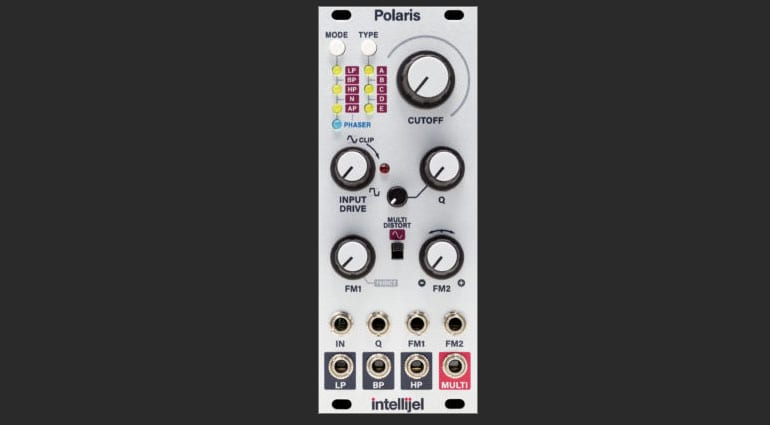
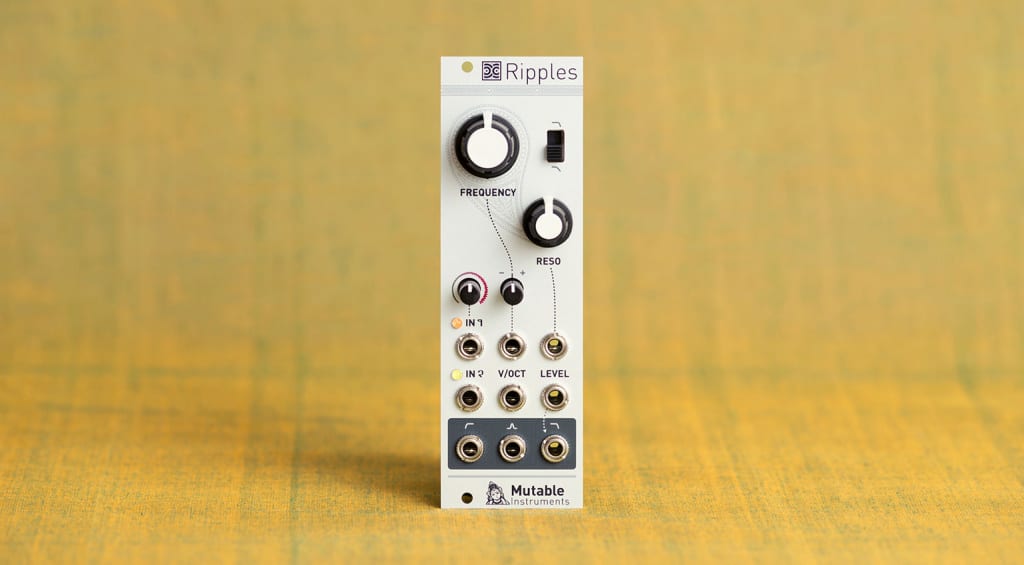
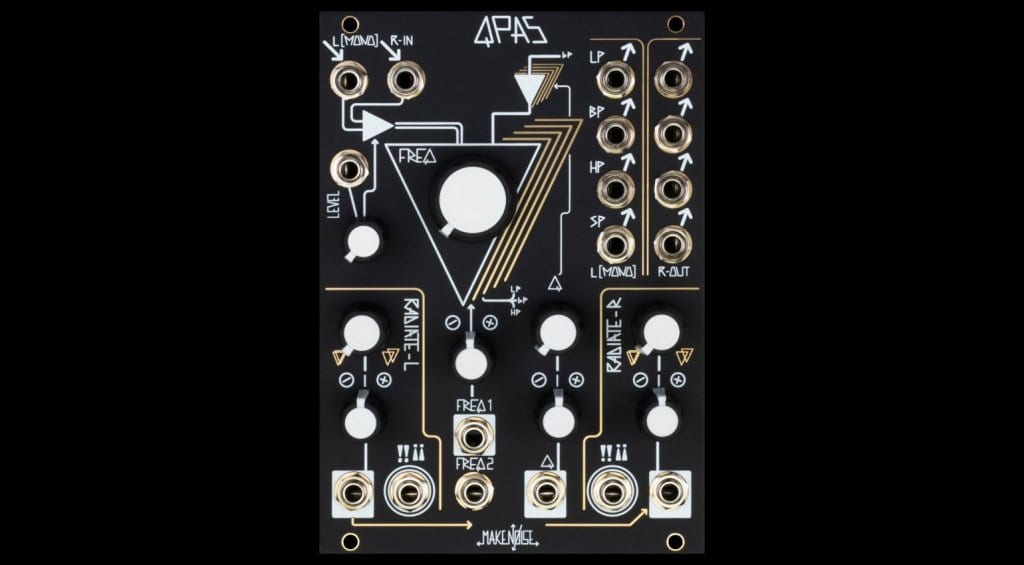
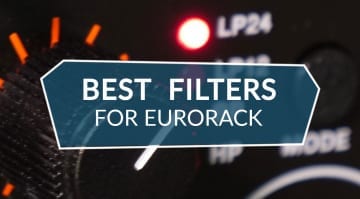




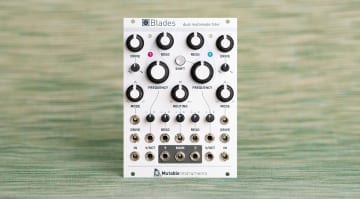
Doh had to read that see what I did there comment twice – I don’t think it made the mental cut-off 🙂 OK that was a really low pass at high brow joke.
Nice overview of these. When I move from some of the utility modules I am currently searching for currently to ones more intended to shape the sound, there are several here I will be considering.
Stereo Dipole by SSF, Belgrad by Xaoc, Pittsburgh’s Binary, and the 914 Fixed Filter Bank by AJH… just a few of my favorites… I too am a filter snob. I even patch VST synths out to Eurorack filters… It just sounds so much better than ITB filters.
Love the Jove – Morgasmatron by Intellijel should be in there too
I see no reason for ripples to be in this list. There are 10ths of filters better/ more interesting than this!
Great review, I especially like the Mutable instruments Ripples. Not a big fan of the wasp. Thank you
How about the AJH Synth filters, or for the price of most of the filters reviewed a pair of Doepfer A-106-5 SEM filters and still have cash left over. My favourite though, has to be the XAOC Belgrad.
Vult Freak Manifold Filter is the best Filter!!!
I would add IME Bionic Lester and Rossum Morpheus Z-Plane filter to the list. These are two of the most complex and powerful filter devices ever made. Hundreds of filter types and combos plus ability to craft custom presets for recall later with patches.
I would recommend dual/stereo filters. Mine are Linnaeus and Gemini 2412. Two monsters.
Also you may use two mono filters with different characters for interesting stereo results (i like using a Filter 8 and a Sonic XV)
You are currently viewing a placeholder content from Facebook. To access the actual content, click the button below. Please note that doing so will share data with third-party providers.
More InformationYou are currently viewing a placeholder content from Instagram. To access the actual content, click the button below. Please note that doing so will share data with third-party providers.
More InformationYou are currently viewing a placeholder content from X. To access the actual content, click the button below. Please note that doing so will share data with third-party providers.
More Information